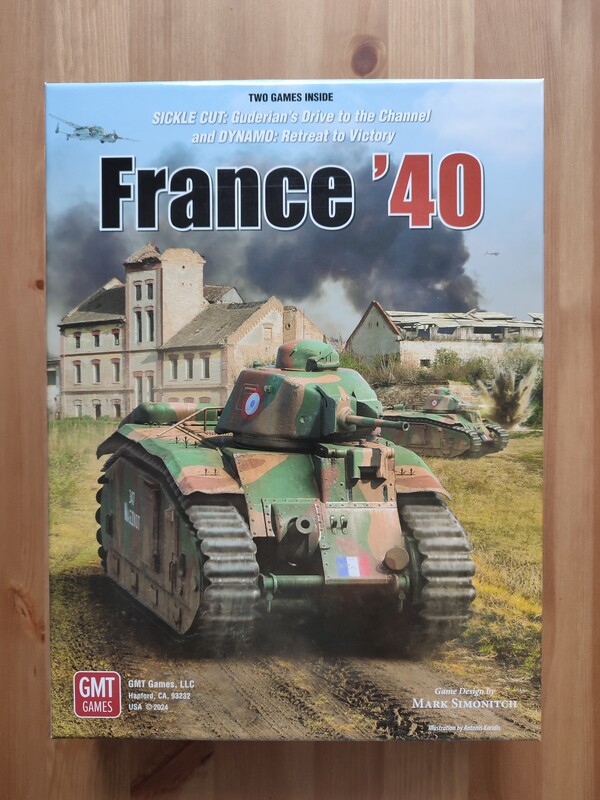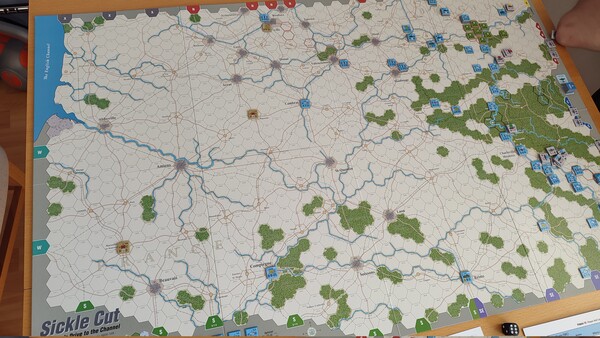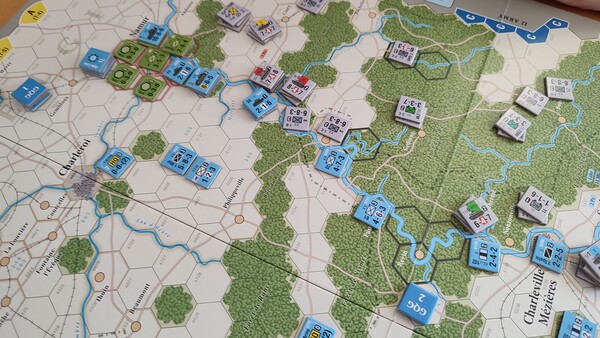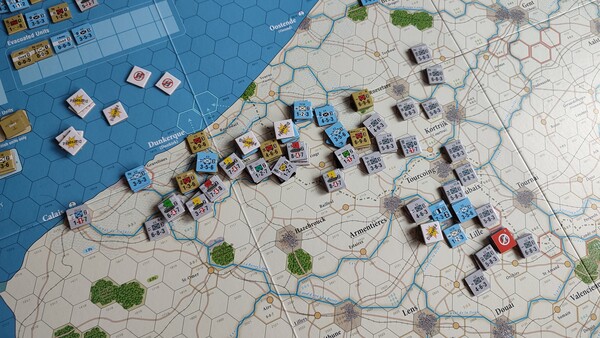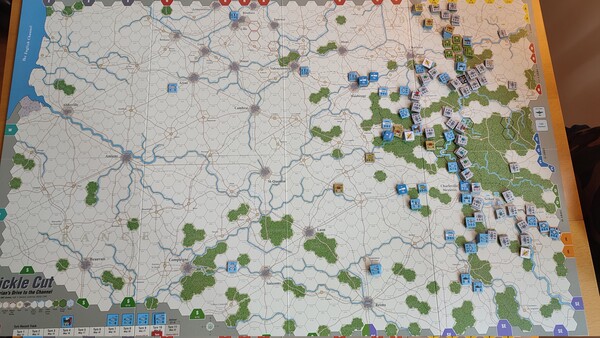France ’40, 2nd Edition. A boardgame review
Towards the end of 2023 I reviewed a boardgame called Salerno ’43 and mentioned my return to wargaming. Since then, I have been actively playing wargames — though maybe not as frequently as I would hope for — and have also purchased a few new games. The one I want to write about today is the second edition of France ’40 from GMT Games, which came out in 2024. I already had the first edition, released in 2013, but this new release revises the units and the rules. It also offers better quality of components: thicker counters, sturdier box, and, optionally, a mounted map — like many other wargames, France ’40 comes with paper maps by default. Knowing how good the game is, upgrade to the second edition was an obvious choice.
Similarly to Salerno ’43 and other WWII games by Mark Simonitch, France ’40 is a hex-and-counter game for two players. It focuses on the German invasion of France in May and June 1940. The game comes with two scenarios, each with its own separate map, and a campaign game that combines both scenarios into one game. First is the Sickle Cut scenario, which depicts the German advance towards the English Channel in May 1940. Germans start at the eastern edge of the map, near the town of Namur and in the Ardennes forest south of it, and must advance towards the English Channel and the coastal town of Abbeville in the west. The Allied player, commanding combined France and British forces, plays a defensive game and must attempt to stop, or at least slow down, the German offensive.
The second scenario, called Dynamo, takes place in late May and early June and depicts the Allied evacuation from Dunkirk. The Allies are tasked with evacuating their troops, which requires conducting an organized retreat that slows down the German advance towards the coast. This scenario also involves Belgian troops fighting on the Allied side, though they surrender on 28 May.
Every scenario can play out in many different ways. Sometimes, a game will result in historical outcomes. Other times, it will be a complete opposite of what happened. I have played a Sickle Cut game, where the German player’s plan to advance through the Ardennes completely failed. As a result, the entire German offensive was stopped, with barely any progress made towards the English Channel.
Rule complexity of France ’40 is comparable with other WWII games by Mark Simonitch. Even though each scenario comes with its unique rules — e.g. train movement in Sickle Cut or beach evacuation in Dynamo — the overall amount of special rules isn’t large, and they don’t add much complexity. But most importantly, the overwhelming majority of terrain on both maps is either a clear terrain or a forest, making it very easy to memorize terrain properties and allowing to avoid frequent checking of Terrain Effect Chart. As a result, the game plays quickly — by wargaming standards at least. Once both players know the rules, the Dynamo scenario can be played in about 3 hours, while Sickle Cut takes about 4 hours.
For these precise reasons, out of all games by Mark Simonitch, this is the one that makes it to my table most often. The short playing time makes it easy to play the game multiple times and experiment with different strategies. I in particular enjoy playing Dynamo scenario as the Allied, where blocking the German advance feels like a puzzle to solve. A puzzle that is different every time, because the opponent never makes the same decisions.
GMT Games needs help because of the tariffs
Unfortunately, the timing of this post is not accidental. If you follow the news, then you are aware of recent tariffs introduced by Donald Trump on goods imported from China. With the situation changing daily it is hard to tell how this is going to end, but in their current form these tariffs are an existential threat to many American game publishers, including GMT Games. There is a good post on BoardGameGeek that compiles explanations from various publishers on why it is not possible to move production from China to the USA. The latest customer update from GMT Games goes into more details on the current financial situation — a highly recommended read. The gist is that we can help GMT Games and other publishers to weather this storm by purchasing games directly from them, allowing to maintain financial fluidity in the coming weeks.
